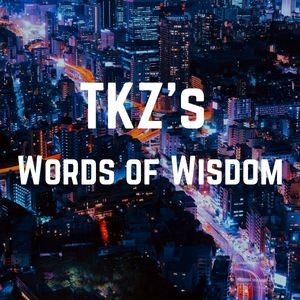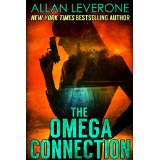What Could Go Wrong?
Terry Odell

As you read this, I’m probably prone on a Long Island beach attempting to take decent photos of nesting shorebirds. (I was going to say I was shooting birds, but that could be misinterpreted, especially in this group.) I’ll try to check in and respond to comments, but please don’t let my absence keep you from expressing yourself.
I normally keep my own blog, my Substack, and my TKZ posts separate, but given that I’ve been trying to prepare for the trip and deal with major rewrites on the current wip, I took the liberty of repeating myself here.
When I learned that it would be better to have my Triple-D Ranch Series published before my scheduled BookBub Featured Deal on July 9th, I set the wip aside while I created the ebook. No worries. I’ve done this many times before.
I had the manuscript put together and used Draft2Digital to create the epub. I downloaded it, and it looked fine, but wanting to make sure I had some time to make sure it was really ready, I scheduled it to release on July 1st, a few days in the future. I use Draft2Digital to get my books onto Apple because that used to be the only route unless you used a Mac. Being lazy, I never changed once Apple allowed PC users to upload directly.
Next, I figured I’d go to Barnes & Noble, which is one of the ‘easier’ places to upload a new book, because they don’t have territorial pricing, which is always a challenge for me. Before I’d gotten more than a couple of steps into the process, they asked, “Does your file include the cover?”
Dang. I’d added the individual covers for each title into the manuscript, but had totally neglected to include the one I’d created for the book.
Back to the manuscript, add the cover, then back to D2D to reupload the file. Checked to make sure no gremlins had crept in, and approved it for publication. Back to B&N, and finished jumping through their hoops. Checked the final review. How had I chosen my Mapleton Mysteries as the series this Triple-D Ranch book belonged in? Probably because I’d just adjusted the pricing on one of the Mapleton bundles, and that was where my brain remained. Edit. Reupload.
Kobo was straightforward enough, although they have a bunch of territorial pricing options, too.
Then, onto Amazon. By now, it should have been easy, right?
I got as far as uploading my manuscript file, which seemed to be taking much longer than usual to load. It finally did, I went through all the other steps, and downloaded the file to make sure their software hadn’t messed anything up.
What? Where was all the back matter I’d added through D2D’s options. My author’s note, all my other books, my teaser? I went back and looked. Somehow, I’d managed to upload my Word file, not the epub I’d created. So, once again, I upload the file, and this time, everything seems to be right. Amazon has territorial pricing, but not as many venues, so it didn’t take as long. But wait. I’d recently changed the pricing on a Mapleton bundle, and I was using those prices, not the ones based on the pricing for the Triple-D book. Go back to the Kobo pricing page, screenshot those prices and enter them at Amazon. Except … Amazon has price ceilings that are lower than Kobo’s for some of the territories, so in reality, most of my prices were already where they had to be.
I’m thinking all is well at last, and I still had a couple of days before the book goes live. But I need to add a page for the book on my website. I’ve done this before, too, so it shouldn’t take too long.
My web designer has things set up so if I create the page by cloning a previous book’s setup, I can just make the necessary switches. The cover and other metadata. All is going along swimmingly … until … I look at the home page and notice there’s something different about the cover for this one.
Check out the first cover from my cover reveal blog post. Then look at my book page. Can you tell what I did wrong?
So, back to Canva, make the changes, and get the website done. Almost. Turns out the cloning process only works properly if you clone a book from the same series. I hadn’t. I’d just used my most recent release, Danger Abroad, which is a Blackthorne title. So, the automatic populating of the page pulled the Blackthornes, not the Triple-Ds. Delete that file and start over, this time with a Triple-D title. Took a little longer because there was a section I wanted to be on the new book’s page that wasn’t on any of the other Triple-D titles, and I had to figure out how that worked by trial and error. (Because I wasn’t going to pay my web designer to change it unless I was totally out of my depth. Money, either incoming or outgoing, is a great motivator for me, and I did manage to figure out how to add that section.)
Only one more thing I had to do—change the cover everywhere—but I couldn’t do that until the book was live, because you’re not allowed to touch things when it’s that close to release.
So, a half day project ended up taking about three days, not counting the waiting for release so I could swap out the cover.
Anyone else have as many brain lapses on one project?
New! Find me at Substack with Writings and Wanderings
When breaking family ties is the only option.
Madison Westfield has information that could short-circuit her politician father’s campaign for governor. But he’s family. Although he was a father more in word than deed, she changes her identity and leaves the country rather than blow the whistle.
Blackthorne, Inc. taps Security and Investigations staffer, Logan Bolt, to track down Madison Westfield. When he finds her in the Faroe Islands, her story doesn’t match the one her father told Blackthorne. The investigation assignment quickly switches to personal protection for Madison.
Soon, they’re involved with a drug ring and a kidnapping attempt. Will working together put them in more danger? Can a budding relationship survive the dangers they encounter?
 Like bang for your buck? I have a new Triple-D Ranch bundle. All four novels for one low price. One stop shopping here.
Like bang for your buck? I have a new Triple-D Ranch bundle. All four novels for one low price. One stop shopping here.
 Terry Odell is an award-winning author of Mystery and Romantic Suspense, although she prefers to think of them all as “Mysteries with Relationships.”
Terry Odell is an award-winning author of Mystery and Romantic Suspense, although she prefers to think of them all as “Mysteries with Relationships.”





